The Tale of Two Ivies
Hedera canariensis ( Canary Islands Ivy ) and Hedera helix ( English Ivy ) are two related plants that can be useful in gardens and landscapes. Ivy is a plant that clings to various supports by itself... it does not twine up supports like some other climbing plants. This makes Ivy useful for covering walls and fences, but Ivy can also be useful for a ground cover plant. It softens rock walls, and can be useful for erosion protection and weed suppression. Both plants are very tough, drought tolerant when established, and will tolerate some sun, but are happiest in a semi-shaded position.
Ivy are considered primarily foliage plants, as the flowers are quite insignificant. Canary Islands Ivy has the larger leaf of the two, and comes in several varieties. English Ivy has a smaller leaf, and is known for being toxic to humans and animals when eaten. Both plants are sometimes used as indoor plants. The following photos were taken from around Sydney gardens.
Canary Islands Ivy used on a stone wall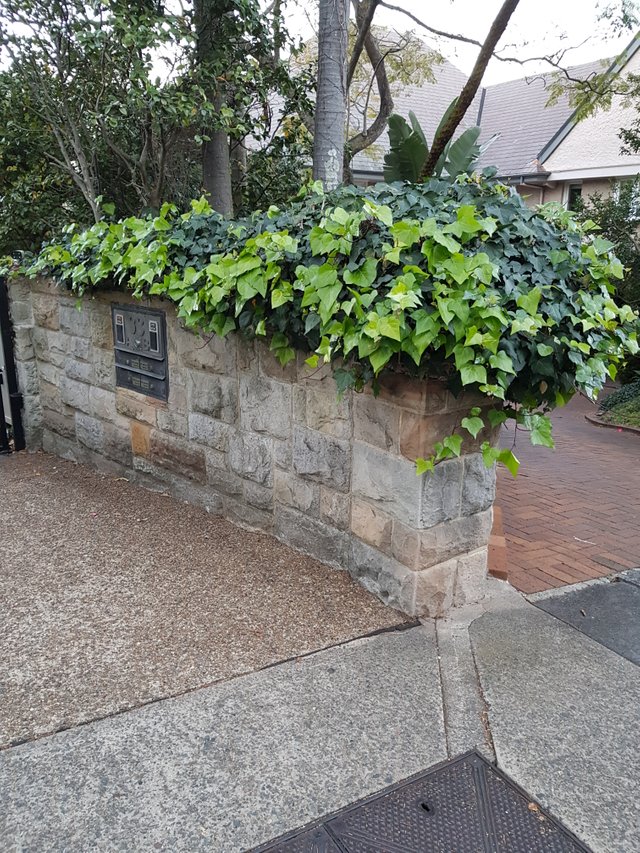
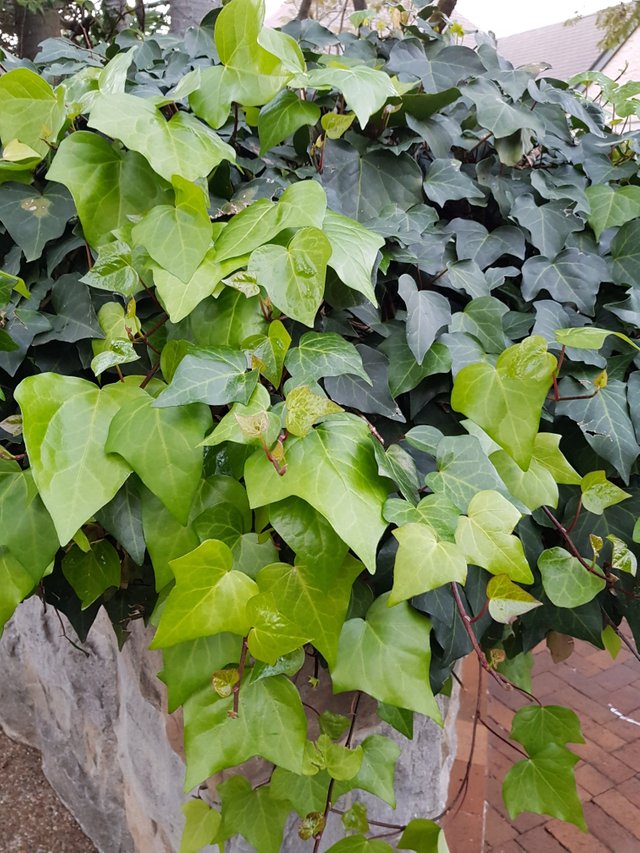
Softening a stone embankment wall
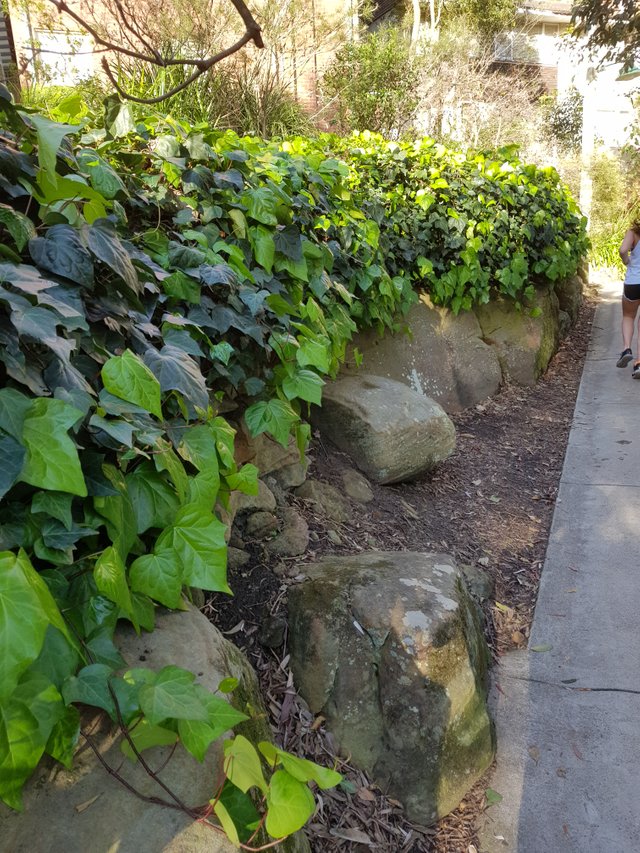 ![new7 021.jpg]
![new7 021.jpg]
Covering a fence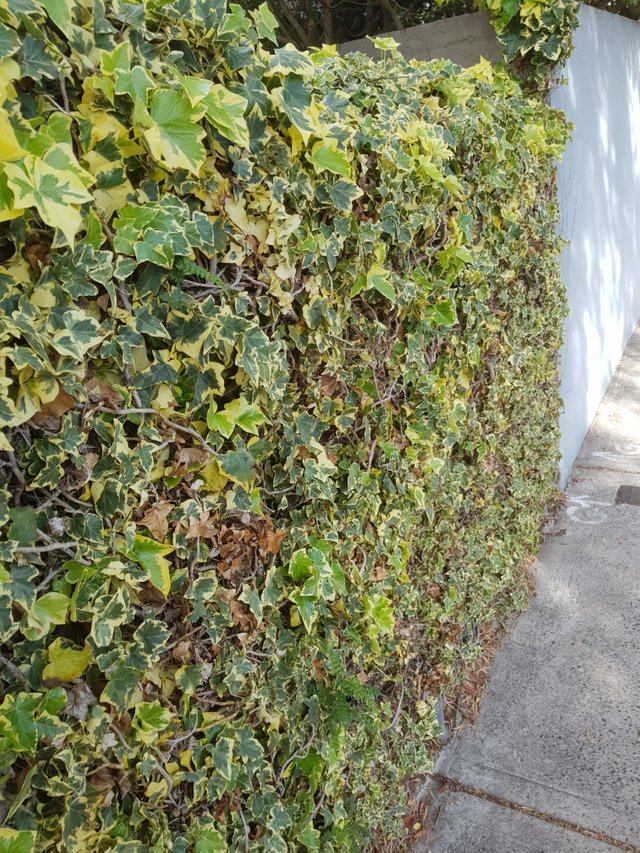
(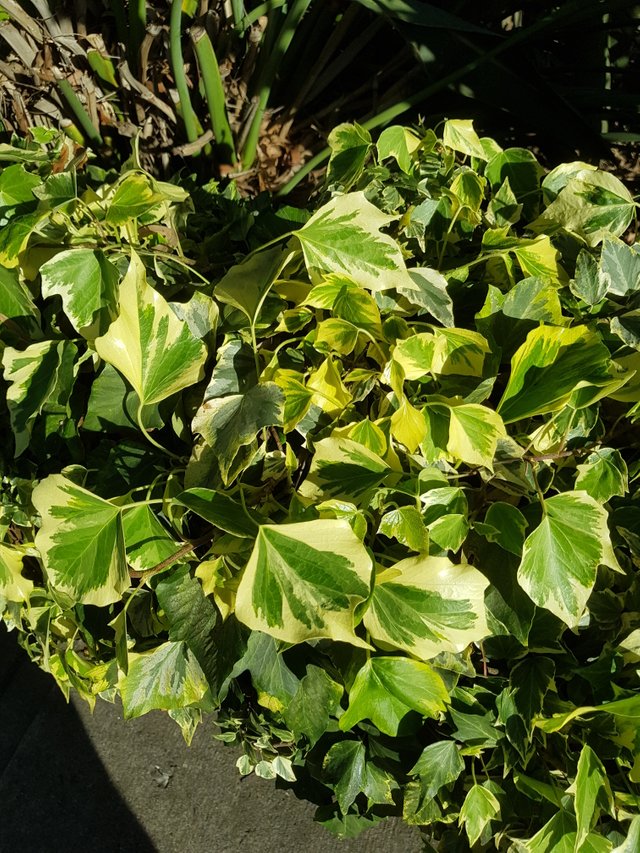 )
)
English ivy covering a rock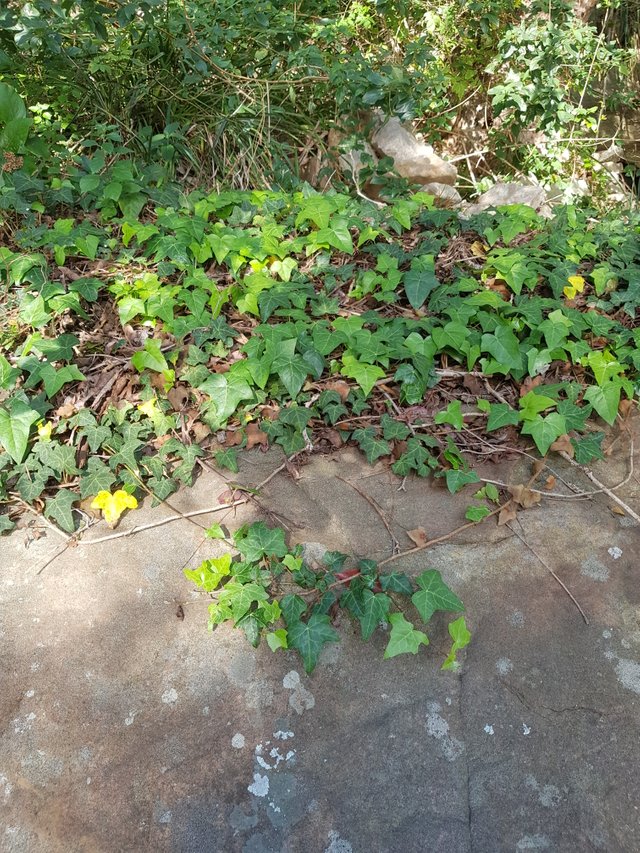
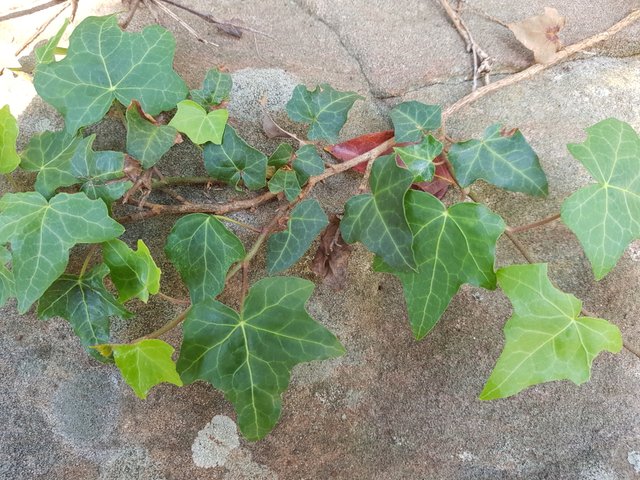
Beautiful plant @ctrl-alt-nwo! When they think of ivy, most people think of traditional English Ivy (Hedera helix), however the number of varieties of Ivy is enormous. Ivy species range in form from the huge 6-8 inch leaved Algerian Ivy (Hedera canariensis) to the tiny foliage of the hybrid 'Itsy Bitsy' or heart leaf ivy (H. 'scutifolia').
The leaves may me crinkled as with the variety 'Curlilocks', or variegated types like 'California gold' (yellow, gold, and green) or Hedera helix 'discolor' (green and creamy white).
Several types of ivy are also suitable for growing as a house plant, and can be used as a hanging plant, topiaries, or espaliered on a small trellis.
As a house plant, Ivy grows best where they get four or more hours a day of direct sunlight, but it will grow fairly well in bright indirect light.
Keep the soil evenly moist and feed with half strength, all purpose (10-10-10) fertilizer once a month.
Ivy prefers to be kept on the slightly cool side, night temperatures of 50° to 55° and day temperatures of 68° to 72° are ideal.
Overcrowded plants can be repotted during any season. For best results they should be grown in a mixture of 1 part sterile potting soil, 1 part peat moss or leaf mold and 1 part sharp sand.
To induce bushiness, pinch off stem tips.
A source: http://www.thegardenhelper.com/growingivy.html
Fav. comment Award ! Great Pics and information.
@ctrl-alt-nwo,
I think have seen something similar to this plant in my country! But I guess it's not the same leaf types that I see before! This leaf looks like a grape leaf! Good for fences and rock walls! But personally I won't plant it! Coz I think it needs to be well maintain! At the moment I don't have that much of time!
Great and useful tips for all gardening and landscaping people! Thank you very much for your effort!
Cheers~
English Ivy (Hedera helix), is an annual plant that grows creepy, strong, aggressive, with rapid growth and can grow everywhere (stem walls, tree trunks, creeping soil mixed with no vertical objects, etc.). This plant is a flowering plant species of the family Araliaceae, originating from Europe and western Asia. English ivy leaves look beautiful because they resemble maple leaves.
Plants in English ivy as a building or wall of the house, because there are roots in the stem segments can grow up and close the wall, and the roots are not the same. Besides that, English ivy is also good for hanging plants or ground cover (ground cover).
Source:
https://www.google.co.id/url?sa=t&source=web&rct=j&url=https://m.bukalapak.com/amp/hobi-koleksi/berkebun/bibit-tanaman/bowawx-jual-tanaman-hias-gantung-ivy-hedera-heliks-english-ivy&ved=2ahUKEwi60fasnKjeAhUWSY8KHdAdAhsQFjAYegQICBAB&usg=AOvVaw2Qp6Pi4zsbUG6GsFUzuLdx&cf=1
Silly Sausage Award ! Very nice selection of Pics.
Shared on twitter promoting good quality content on #Steemit.
Thanks again for sharing your photographs and blog.
Have a great weekend.
Stephen
#Promo-Steem #steemtalent #JoinSteemit #Steemit
The Tale of Two Ivies. #STEEM #steemtalent #JoinSteemit #Steemit
#garden #gardening #gardensworld #plant #life #blog #blogger #australia #photography #photographer
https://twitter.com/StephenPKendal/status/1056581972775108608
Thanks Stephen !
Hedera canariensis is a species of ivy (genus Hedera) which is native to the Atlantic coast in Canary islands and northern Africa. Its common name is the Canarian ivy.
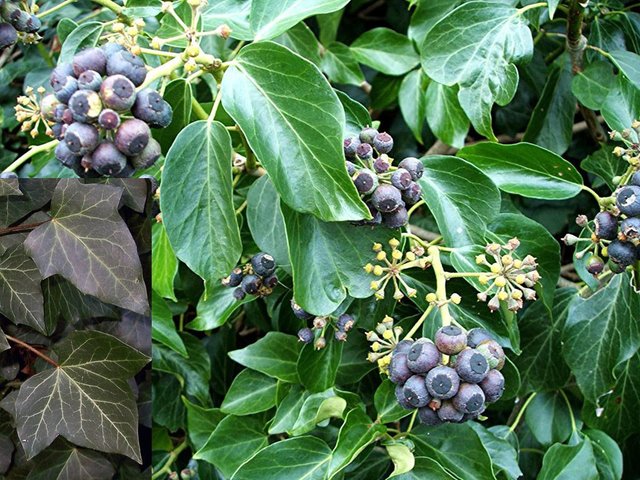
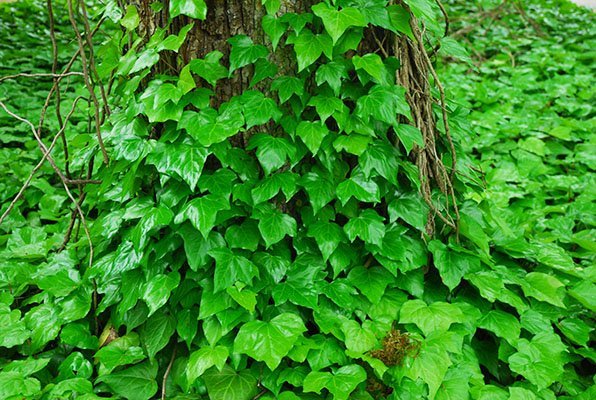
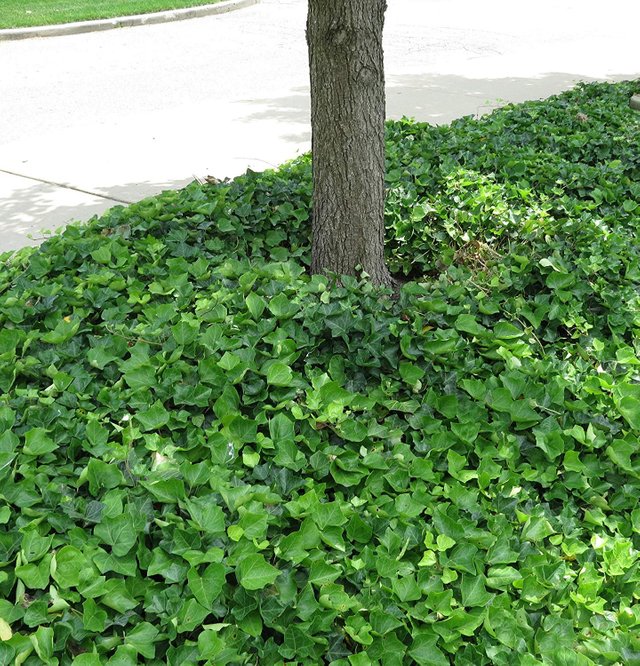
Source
Source
It is an evergreen perennial climbing or trailing woody plant shrub or bush, growing to 20–30 m high where suitable surfaces (trees, cliffs, walls) are available, and also growing as ground cover where there are no vertical surfaces. It climbs by means of aerial rootlets which cling to the substrate. In warm climates, it grows more rapidly and becomes established faster than the related H. hibernica, and H. helix. It is endemic to the Canary islands where it is quite common especially in Laurel forest of Barbusano.
Source
the leaves of Hedera canariensis are broad, 5 to 20 cm, glossy dark green in colour and a little leathery, with 1-5 lobes, regular in size and shape. It is cultivated in gardens and used in floral arrangements. The flowers are greenish and the fruits, globular and black when ripe. Young stems are green or greenish-brown, sometimes tinged with red or purple, becoming grey or grey brown at maturity.
Source
magoo-2 found a series of multi accounts of a same owner is following your articles to cheat your generous rewards.
magoo-2 found these accounts are suspicious & can be multi accounts of a single owner. Conclusion is based on last 1 year transactions:
@alves
@devid1996
@mhyeasin
@sadikulaziz
@msena
@kilee
@ripon1
@googlefighter
@melianasagita
@ashasikder
@hichako
magoo-2
Check our latest multi comment spam update report
It looks like that you have tracked those accounts where only made transaction based on who comments in sir @ctrl-alt-nwo post. But transaction not means multi accounts. I have a relation with my several friends in facebook group where I sell my steem or sbd. Some of them also follow me and i think some of them also made comment on sir @ctrl-alt-nwo post. That not means I'm a multi user. And I'm not a mad that I use 11 accounts as you recommend, it's totally foolish idea.
Amazing plant, my friend and at its best, the glossiest, biggest and most extrovert of all the ivies. We first spotted it covering the ground in in Ranelagh Gardens in Chelsea - just over the road from where the Chelsea Flower Show's held. Avoid too much sun to maintain the glossiness and healthiness but it clearly doesn't mind a bit of morning sun; the attached picture is it covering an east facing wall of a farm building. It needs a good hack back when it gums up the gutters and obliterates the windows but that's easily done with a good sharp pair of shears. Treat it like a hedge. The more you cut it back, the denser and tighter it looks.
Any old soil, including chalk. A bit more liable to get nibbled if it's used as ground cover but cut it back in mid summer and see it come back again all glossy and lovely once more. If you're in a hurry, you could always strim it. Despite being native to the Canary Islands, it's completely hardy.
Severe frost (-4°c or below) will give the leaves a glazed, pendulous look. It can look terminal but it's not. They recover wonderfully well as soon as the temperature rises.
Thank you @ctrl-alt-nwo
A source of information: http://architecturalplants.com/plants/id/hedera-canariensis
These Ivies looks nice and is useful for walls and for a shade if made to climb on a trellis @ctrl-alt-nwo
This fast growing ivy makes a terrific ground cover for frost-free climates. It’s native to temperate regions of North Africa and the Canary Islands but is now found in tropical regions throughout the world. Plants attach to surfaces with tiny rootlets so they’re great for covering uneven surfaces, slopes, or unsightly walls without any sort of attachment or trellis.
https://www.mygardenlife.com/plant-library/4252/hedera/canariensis
English ivy is a beautiful plant with a long history. Some people value ivy for its ability to form an attractive cover over walls and tree trunks. Others consider the plant to be an annoying weed that damages the environment and must be eradicated.
English ivy is native to Europe, western Asia, and northern Africa. The plant has been introduced to other parts of the world. Unfortunately, as an introduced plant ivy may have no natural enemies to control its growth and may become invasive. An "invasive" plant spreads rapidly and hurts native organisms.
Ivy is mildly poisonous. In addition, some people develop dermatitis after coming into contact with the plant. On the other hand, the plant may have health benefits. It has other benefits as well, even in North America, where it can sometimes be problematic. In this article I'll discuss English ivy from a North American perspective.
https://dengarden.com/gardening/English-Ivy-Facts-Uses-and-Problems
These leaves look very nice on the wall. But I should stay away from the poisonous ivy! They don’t have flowers nor fruits!
Posted using Partiko iOS
Actually they do have little flowers and berries, but the berries are toxic. I know you like to eat your vegies :)